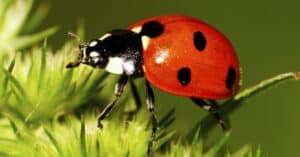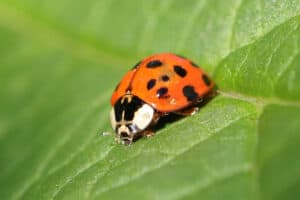The northern cardinal was named the state bird of Ohio in 1933, becoming the first official animal symbol of the Buckeye State. It would be the only state animal symbol for 42 years until finally, in 1975, Ohio legislators named a second animal symbol for the state. This time it was a state insect. Senate Concurrent Resolution 14, 111th General Assembly, 1975-1976 Session declared the official Ohio state insect is the ladybug.
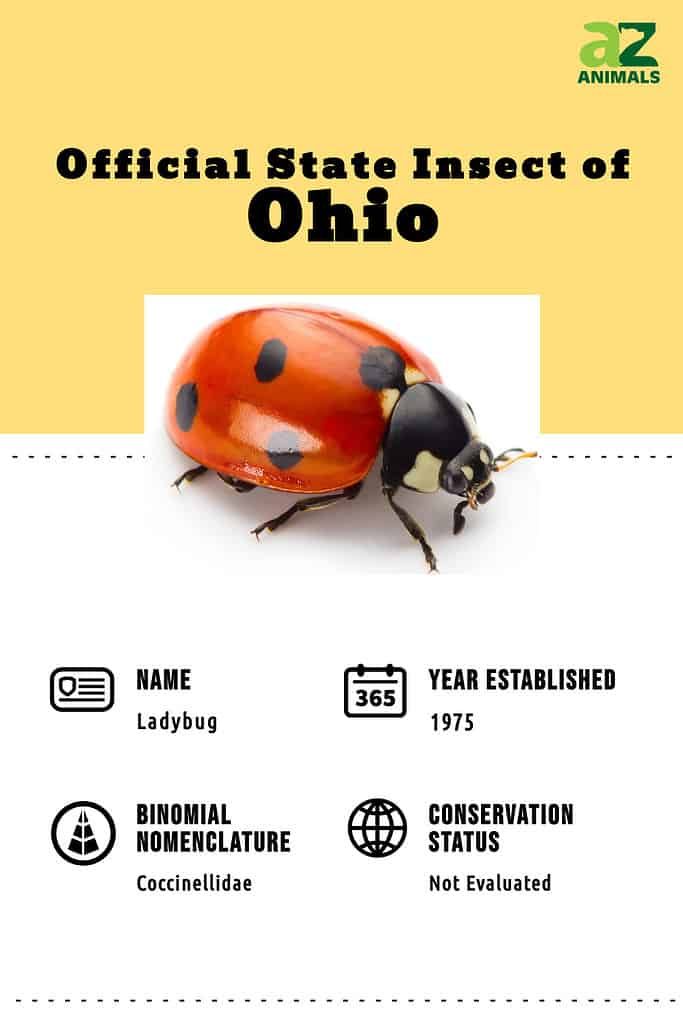
The Ladybug’s Journey to its Official Ohio Status
The ladybug’s official state status began with an elementary school teacher in Toledo in 1973. Ruth Michaelis read an article in an Ohio periodical that reported how Maryland lawmakers had just designated the Baltimore checkerspot butterfly as their official state insect. Mrs. Michaelis used this to open a discussion with her students. She challenged them to consider what insect should be named the official insect of Ohio.
Her second and third-grade students decided the ladybug should receive state designation. The students offered multiple arguments in support of the ladybug as Ohio’s state insect. First of all, the children noted that the ladybug is red, just like Ohio’s state bird and state flower (red carnation). More importantly, these students noted that ladybugs are valuable to farmers and gardeners because they prey on harmful insects such as aphids.
This classroom lesson progressed into a lobbying campaign. Petitions were signed, and letters were sent to state lawmakers requesting official state status for the ladybug. In 1975, two years after the discussions began in Mrs. Michaelis’ elementary school classroom, Ohio legislators made the designation official.
According to the Ohio General Assembly’s resolution: “The ladybug is symbolic of the people of Ohio — she is proud and friendly, bringing delight to millions of children when she alights on their hand or arm to display her multi-colored wings, and she is extremely industrious and hardy, able to live under the most adverse conditions and yet retain her beauty and charm, while at the same time being of inestimable value to nature.”
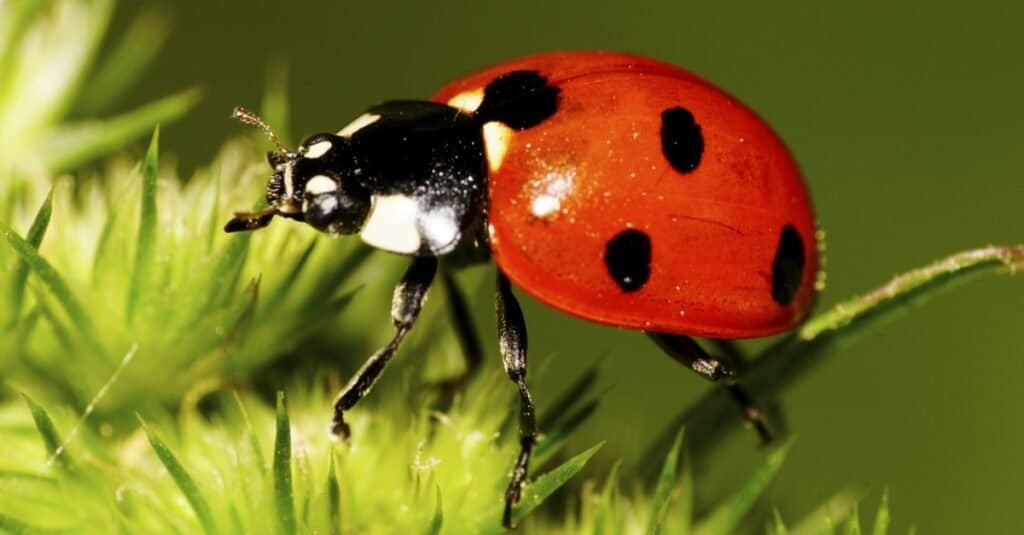
A Toledo teacher and her students championed the ladybug as the best choice for Ohio’s state insect.
© Sergey/Shutterstock.com
A Resolution, but Not a Law
Interestingly, the declaration of Ohio’s state insect was made by a concurrent resolution, not actual legislation. That may seem like splitting hairs, but there is a significant difference. A law requires the governor’s signature, but a resolution does not.
The ladybug became Ohio’s state insect by resolution, but it never became law. The governor signed no legislation, and nothing was ever filed with the Secretary of State.
The ladybug is the only Ohio animal symbol to be designated by such a resolution. All the others were signed into law. The only other Ohio state symbol adopted by resolution is the official state rock song, “Hang on Sloopy.” The song, which is a staple at Ohio State football games, was named the official rock song of the state by concurrent resolution in 1985.
The Ladybug (Coccinellidae)
While “ladybug” is its most common name, the insect is not a true bug. It is a beetle. In Europe, it is known as the “ladybird beetle.” Variations of this name are attributed to a legend involving a group of farmers whose crops were plagued with aphids. They prayed to the Virgin Mary for help, and that help arrived in the form of these beetles that consumed the aphids. The insect became known as “Our Lady’s beetle” and variations thereof.
Both the European legend and Mrs. Michaelis’ students recognized the ladybug’s importance to agriculture. These beetles predate crop-destroying insects such as aphids. In fact, one ladybug can eat 50-75 aphids per day. The beetle also feeds on scale, mealybugs, mites, thrips, whiteflies, and other destructive insects.

Aphids are the ladybug’s preferred prey.
©iStock.com/Henrik_L
Body Composition
Ladybugs are small, round beetles with colorful wing covers known as elytra. Depending on the species, ladybugs can be red, orange, or yellow. Many feature the trademark black spots that most people associate with ladybugs. However, some species are solid black.
The beetles have an exoskeleton made from ‘chitin’ — a strong protein similar to human hair and nails.
Like all insects, the ladybug is a hexapod (it has six legs). The ladybug’s body is comprised of three parts: the head, thorax, and abdomen. The head contains the mouth, eyes, and antennae. The thorax is where the legs and two pairs of wings are located. The abdomen contains digestive, respiratory, and reproductive organs.
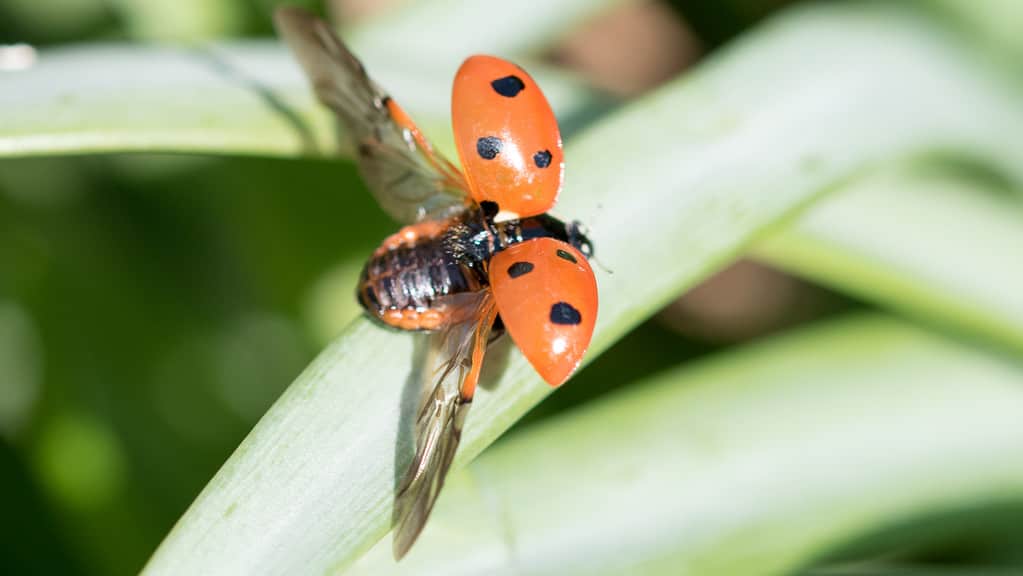
Like all beetles, ladybugs have two sets of wings.
©Konrad_Brambach/Shutterstock.com
Species and Colors
This beetle is found in all of Ohio’s 88 counties. There are over 450 species of ladybug in North America and more than 5,000 worldwide. However, Ohio legislators did not name a specific ladybug species as the state insect.
People, young and old, admire the ladybug’s lovely colors. In fact, a group of ladybugs is called a loveliness! But the insect’s colors have a purpose beyond simple beauty. The vibrant colors serve as a warning to would-be predators such as birds, frogs, wasps, dragonflies, and spiders. When a ladybug is threatened, it secretes toxins from the joints in its legs, a function known as reflex bleeding. Predators learn to associate the ladybug’s bright colors with these foul secretions, and they steer clear.
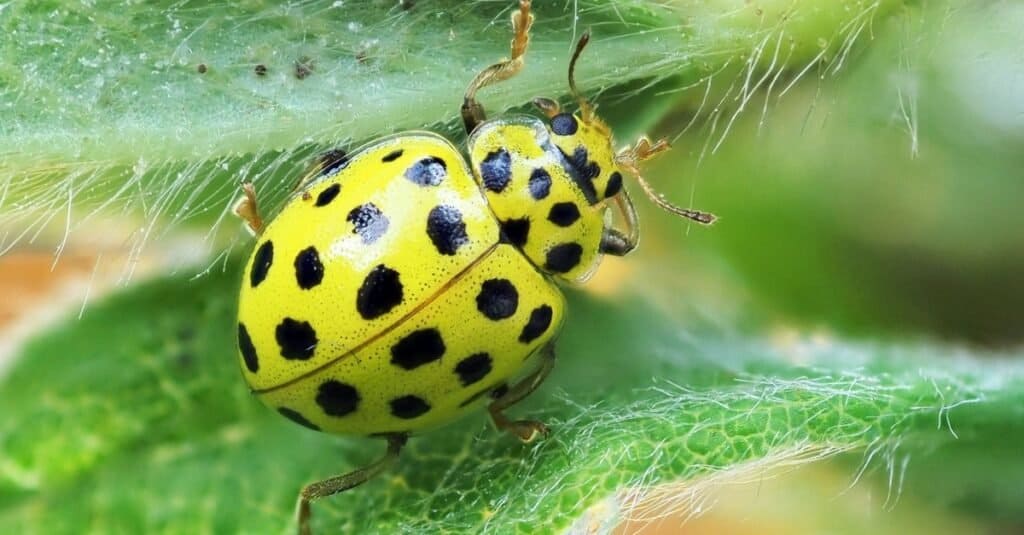
The bright colors of a ladybug are a warning sign to potential predators.
©L-N/Shutterstock.com
Where Do Ladybugs Go in Winter?
Winter in Ohio can bring some nasty weather with lots of snow and bitterly cold temperatures. Ladybugs gather in large groups to dispause (the insect version of hibernation) for the winter. They gather together under the cover of logs, trees, as well as manmade structures. The beetles can survive off their reserves for as long as nine months, though the ladybug dispause is rarely that long in Ohio. Once the temperature hits 55°F, the beetles break out of dispause and begin searching for food.
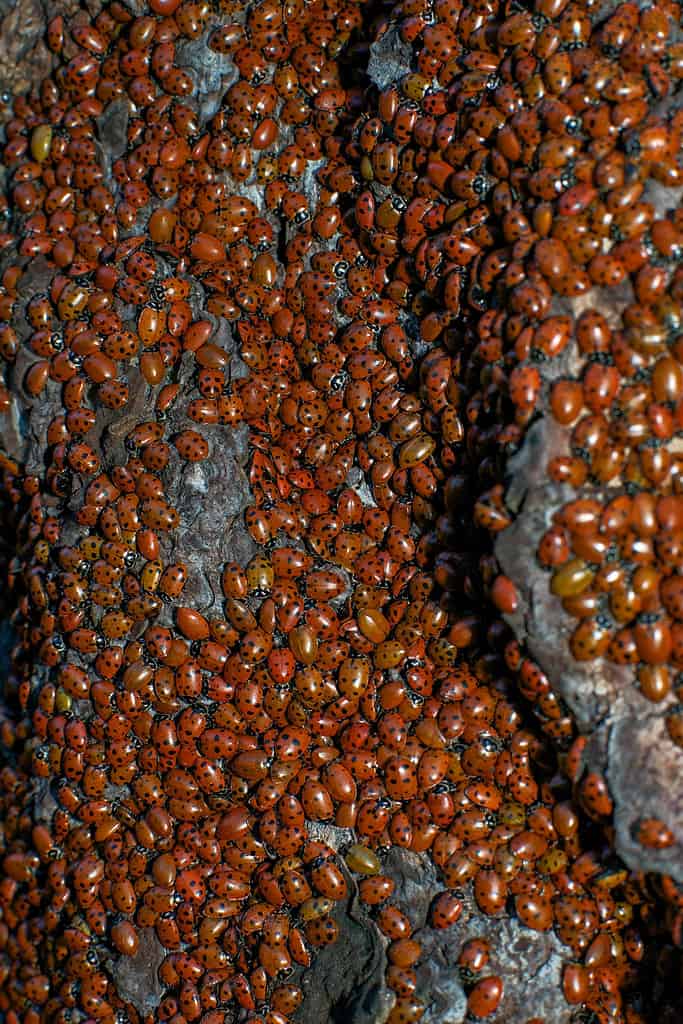
Ladybugs gather in massive swarms during the winter.
©iStock.com/AlessandraRC
Space Bugs
You’ve heard of Spaceballs, but how about Space Bugs? NASA has sent many different insects into space (despite all the warnings provided by science fiction!). The list of insects that have been to space includes ants, silkworms, honeybees, fruit flies, spiders (which are arachnids, not insects, but you get the point), and yes, ladybugs.
Scientists wanted to test whether ladybugs would still have the needed mobility to catch and consume aphids while in space. While that may seem trivial, this type of research could help with future space travel and even the colonization of distant worlds.
So, in 1999, four ladybugs were sent to space aboard Space Shuttle Columbia as part of NASA’s STS-93 mission. (This was four years before the Columbia shuttle tragically broke apart during reentry in 2003.) The ladybugs did, in fact, eat the aphids in the microgravity environment of the space shuttle. It was further proof of the tenacity and resilience of this important little beetle.

Ladybugs actually went to space aboard Space Shuttle Columbia.
©NASA / Public domain – License
State Symbols
Along with Ohio, five other states have also made the ladybug an official state symbol, largely due to the importance of the beetle to the states’ agriculture industries. Delaware, Massachusetts, New Hampshire, New York, and Tennessee have all given the ladybug official state status.
Lucky Ladybugs
Ladybugs are seen as good luck symbols in many parts of the world. In England, for instance, the ladybug is a sign of a good harvest. In Sweden, if a ladybug lands on the hand of a young woman, she will marry soon.
While we cannot confirm these good omens that have been attached to ladybugs, we can state that farmers and gardeners certainly like having them around. These small, round beetles are worthy of big respect given their importance to the continued health of the crops that are essential to our survival. They are most deserving of their official status as the state insect of Ohio.
The photo featured at the top of this post is © Vojce/Shutterstock.com
Thank you for reading! Have some feedback for us? Contact the AZ Animals editorial team.




